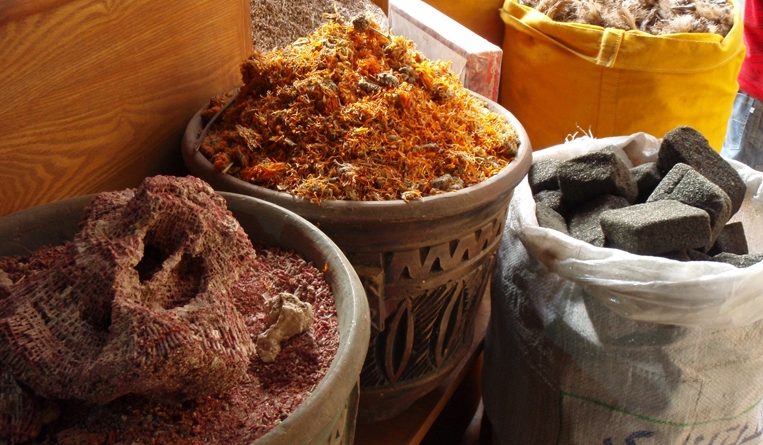
The Story of Spice
The Story of Spice conjures images of tempting culinary arts, fascinating travels to faraway lands, bitter struggles for supremacy and the rise and fall of empires. Judith Jones, along with fellow travellers around the world, discovers the extraordinary story of the world’s most aromatic culinary ingredients.
Judith meets historian and author, John Keay, to learn about the origins of spices in the western European world. The earliest known evidence points to the time of Alexander the Great and its invasion of India when he brought spices back upon his return from Asia. Today India contributes two thirds of the global production and Indian cuisine is characterized by the extensive use of numerous spices.
More information:
Study Guide: The Journey of Spices
Spice Market in Old Delhi, India
To see what spice plants look like before they are harvested, Judith visits London’s Kew Gardens where horticultural expert Joe Archer shows her young specimens of the world’s oldest spices such as pepper, cloves and nutmeg. Another ancient spice that is immensely popular today is cinnamon, which originated in Sri Lanka and is where we join Bobby Chinn, in Ahungalla.
Following Alexander the Great’s return from the Middle East, his haul of Indian spices in tow, the Arabs developed an extensive trade route: The Golden Road of Samarkand. For centuries, spices became the number one commodity in the Middle East with each region developing their own unique blends as Bobby Chinn finds out when he peruses the spice markets in Lebanon.
Back in London, John Keay explains the role of the Roman Empire in the control of the spice trade. By the 13th century the remaining territories of the Eastern Roman Empire had lost control of the spice trade to the Ottomans who continued to trade and control these highly valuable, sought after commodities.
In the early age of exploration, as navigation technics improved, Europeans began searching out spices for themselves; Marco Polo being one of the first explorers in the later part of the Middle Ages to explore the East. Seafaring Venetians then became the new middlemen linking the Ottoman spice traders with their spice hungry customers in Europe.By the end of the 13th century, the Venetians had established Venice as the most important trading port in the world.
When Portuguese explorer Vasco De Gama sailed around Africa’s Cape of Good Hope to reach the west coast of India, Goan cuisine was heavily influenced by the colonising Portuguese. Some of these flavours still permeate in the cuisine today as Angela May finds out in Goa. The Portuguese were also trading with Africa in the 16th century. Bobby Chinn visits a market in Zanzibar to better understand this legacy.
After the Portuguese, the Spanish went on to create and control a new global spice route spanning three continents. The Spanish discovered chilli pepper and vanilla in Mexico, as Florence Tyler learns in Mexico City. Another spice, discovered by the explorer Christopher Columbus on the Carribbean island of Jamaica, was allspice. Today it remains one of the most important ingredients in Caribbean cuisine. In the heart of London’s Camden Market, Judith meets Adrian Luckie who shows her how to make the infamously tasty Caribbean dish, Jerk Chicken.
Continuing The Story of Spice, John Keay explains how the two players, The East India Company in Britain and The Dutch East India Company, fought battles to take control of the spice market throughout the 17th century.
East India Dock, London.
Whereas once spices were particular to specific countries and regions, nowadays, they are grown all over the world. In London Judith meets historian Dr Vivienne Lo, who specialises in the teachings of classical Chinese medicine and the vast range of healing and medicinal properties contained within spices.
The programme finishes with a spicy take on an old traditional classic dish fish and chips with chef Arun Kapil.
Recipes
Credits
with thanks to
SHUTTERSTOCK
QUILON RESTAURANT
KEW GARDENS
MAMA’S JERK STATION
GREEN SAFFRON
